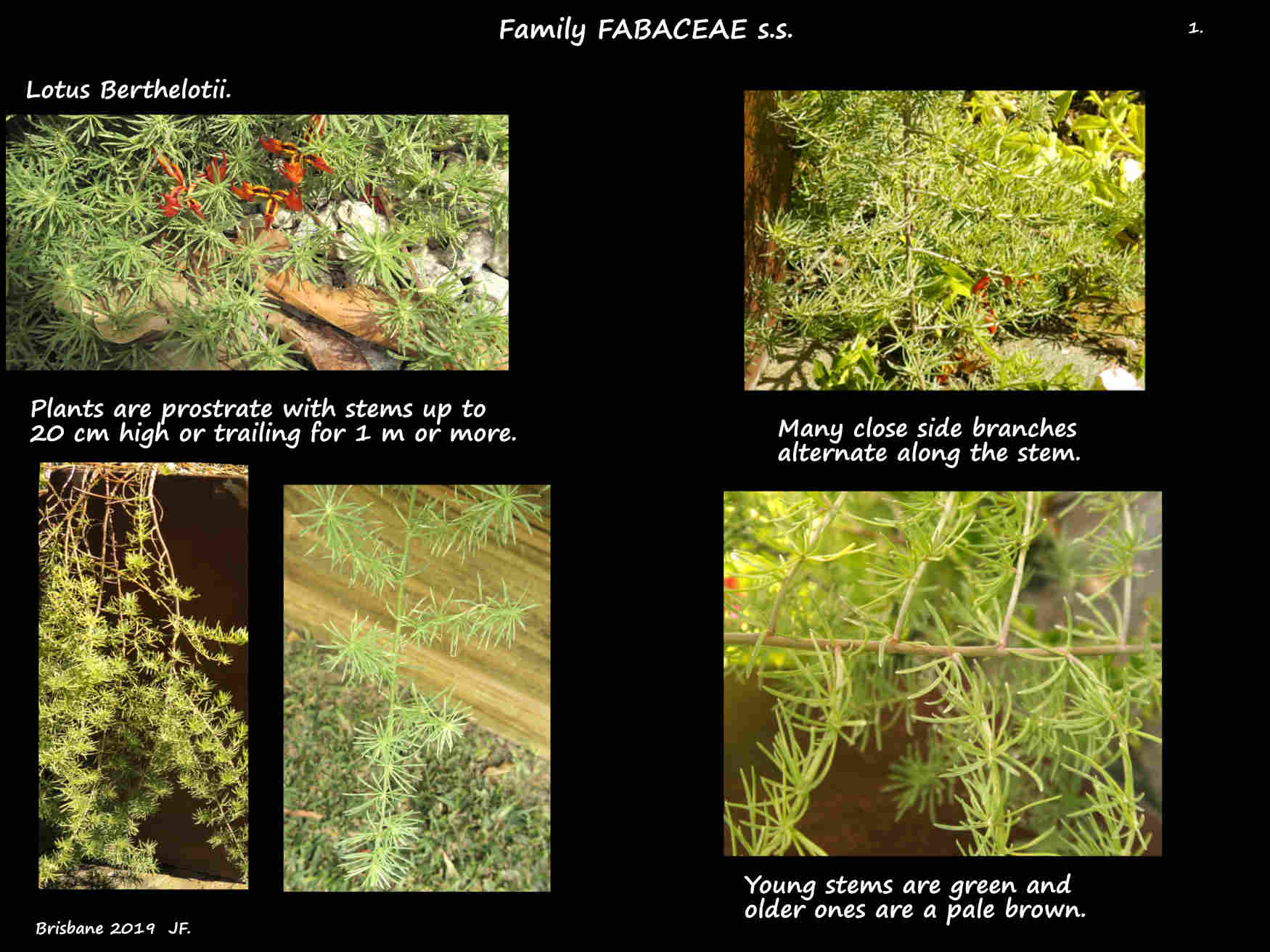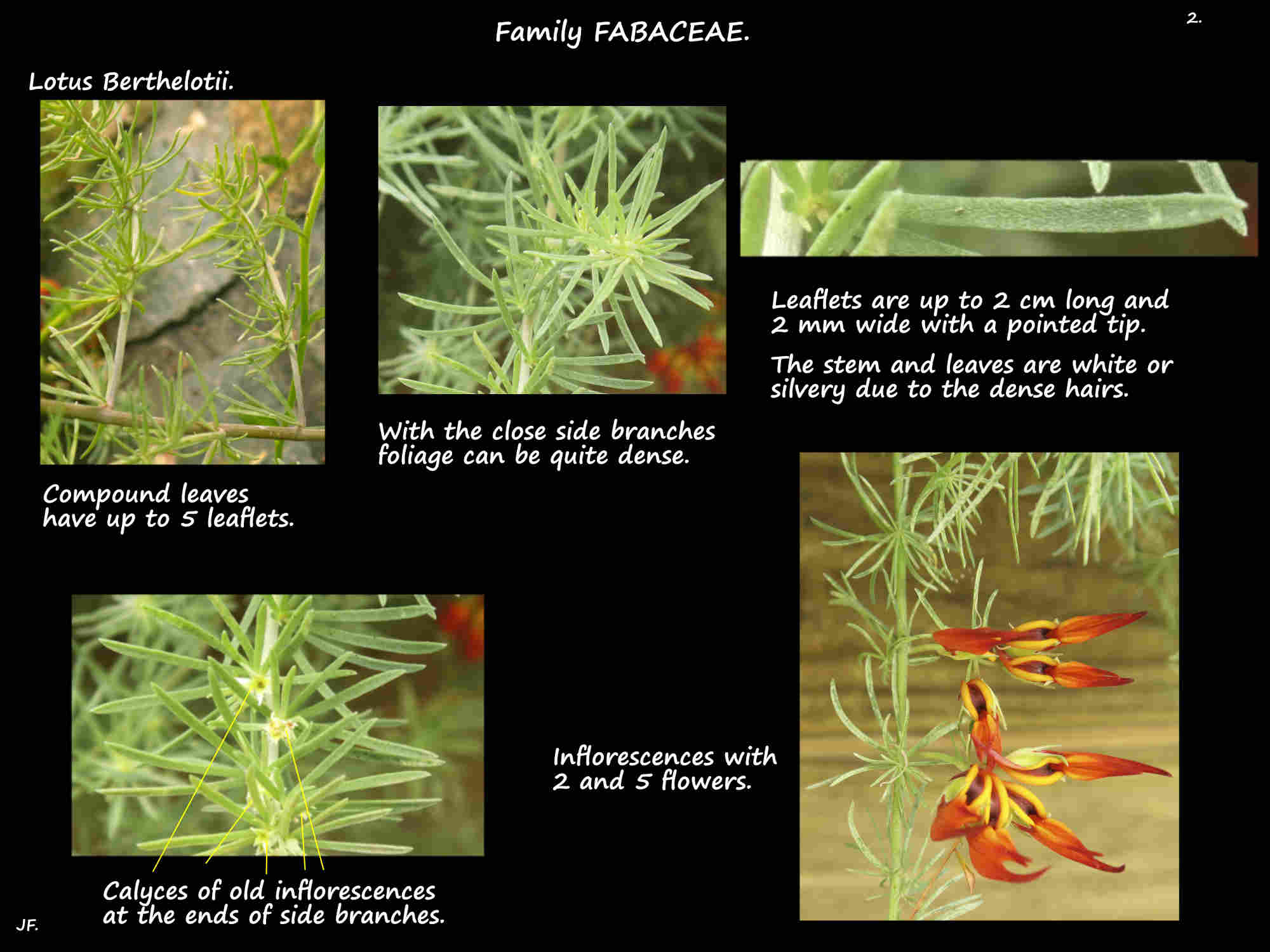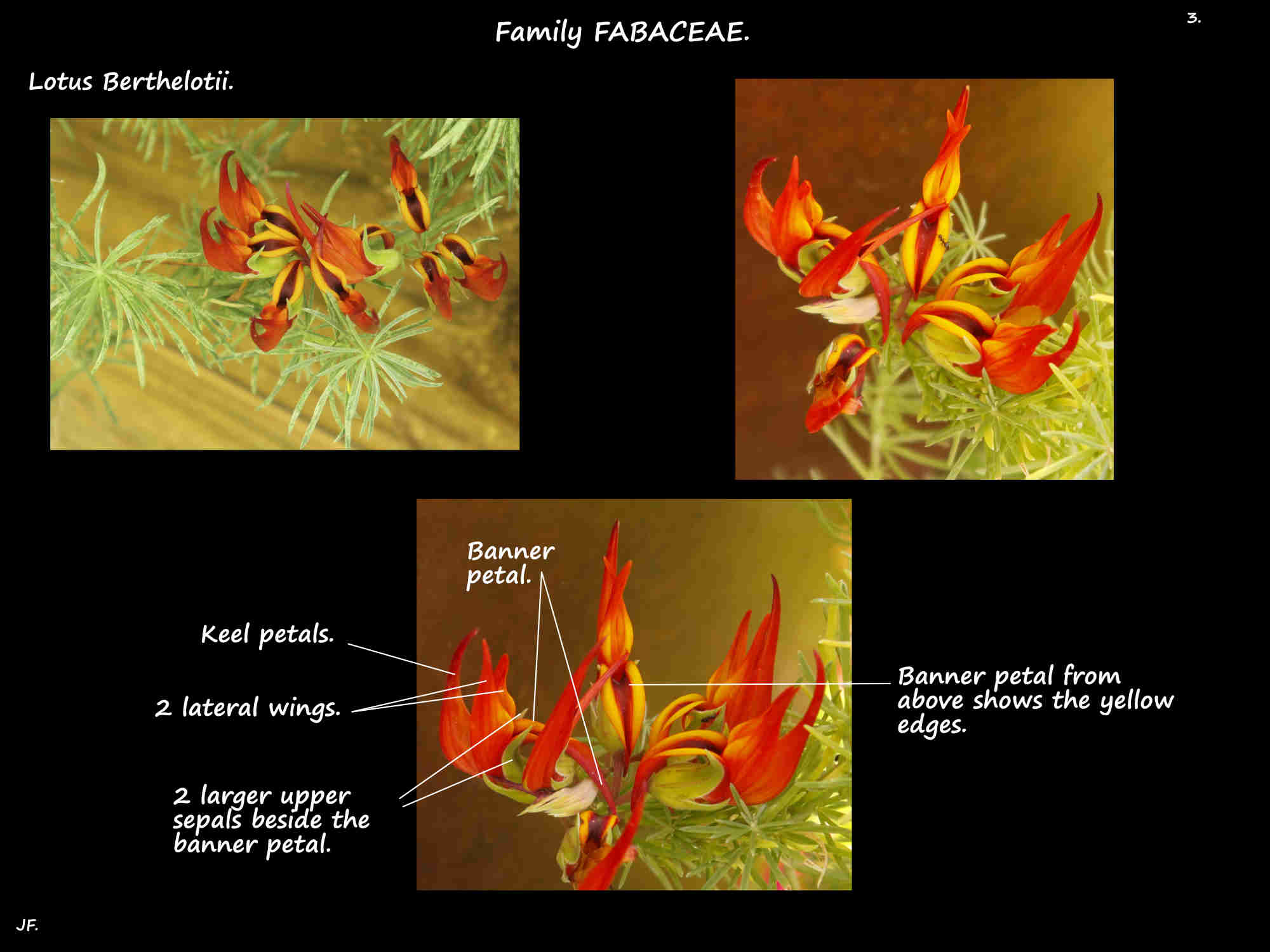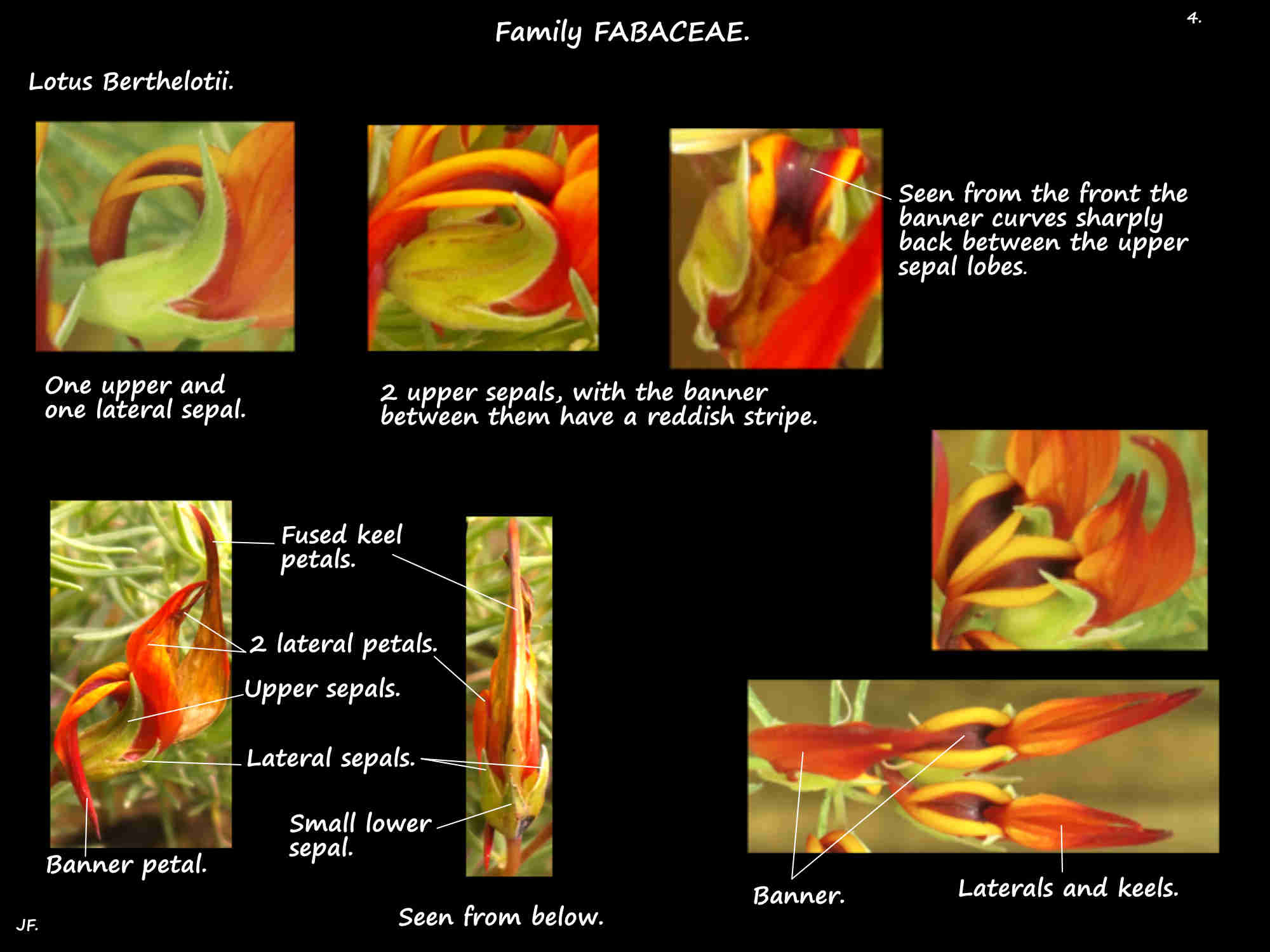Lotus berthelotii.
Family Fabaceae s.s. > Subfamily Faboideae > Tribe Loteae.
Classification of the genus is yet to be settled with estimates of the number of species ranging from 70 to 150.
Mabberley recognises around 125.
They are divided into groups such as the Birdsfoot trefoils and the deervetches.
Lotus berthelotii is commonly known as Coral gem, Parrot’s beak or the Canary birds foot trefoil.
Said to be widely cultivated they are only occasionally seen in Brisbane.
The evergreen prostrate plants can be up to 20 cm high and spread or trail for 1 m or more.
The main stems have many close side branches alternately arranged.
Young stems are green and older ones pale brown.
The compound leaves are alternately arranged along the stems.
Leaves have up to 5 needle-like leaflets up to 2.5 cm long and only 2 mm wide.
There are 2 very small deciduous stipules.
A dense covering of hairs gives the young stems and leaves a white or silvery appearance.
There are some axillary inflorescences along the main stem but most are at the ends of short side branches.
They may be a single flower or a small cluster of up to 5 (10).
Flowers are on a short red pedicel with leaf-like bracteoles at the base.
Bisexual flowers, around 3 cm long and 8 mm wide are typical of the pea family.
The calyx has 5 sepals joined at the base with pointed lobes.
The 2 upper lobes, one on each side of the banner petal are the longest.
The lower lobe is the smallest with the 2 laterals in between.
They are green and hairy and may have a reddish streak down them.
They remain after the petals have fallen.
The upper or banner petal is the most prominent rising up then curving sharply back between the 2 upper sepals.
The two lateral petals or wings are ‘S’ shaped with their base inside the banner petal.
Their tips lie above or along the sides of the keel petals.
The 2 keel petals are fused along their inner edges.
They pass forwards then up then curve back between the tips of the laterals.
Petals can be yellow or red often with the other colour on the banner petal.
They can also be an orange-red.
The stamens, ovary and style lie between the keel petals.
The fruit are green pods with numerous seeds.
J.F.





